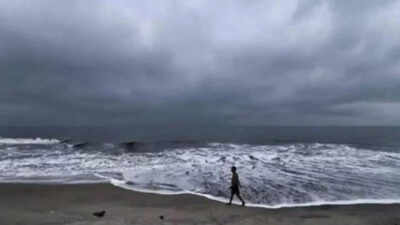ARTICLE AD BOX

Panaji: The frequency of cyclones has shown significant variations, with four cyclones recorded in 2024 and two so far in 2025, reflecting the ongoing impact of increased atmospheric warming in the Indian Ocean.
While the numbers have decreased from previous years, the intensity of cyclonic activity continues to affect various regions, particularly impacting states like Goa, Maharashtra, and Andhra Pradesh.Goa experienced severe effects from cyclone Asna and minor impact from Fengal in 2024. This year, cyclone Shakthi formed earlier this month, threatening Maharashtra and bringing light rain to Goa until Oct 9.The second cyclone of 2025, Montha, is expected to make landfall in Andhra Pradesh from the Bay of Bengal by Oct 28, potentially affecting nearby states.Since 2008, approximately 70 cyclonic storms have made landfall from both eastern and western coasts of India. The period from Jan 2019 to Dec 2024 saw 31 cyclones forming in either the Arabian Sea or Bay of Bengal.The distribution of these cyclones includes eight in 2019, five each in 2020 and 2021, three in 2022, six in 2023, and four in 2024.“Three major phenomena, El Nino, La Nina, Indian Ocean dipole and Madden Julien Oscillation influence the formation of cyclones in the north Indian Ocean, comprising the Arabian Sea and Bay of Bengal,” said M R Ramesh Kumar, chief scientist (retired), NIO, and meteorologist.
Cyclone formation typically occurs during two seasons—the primary post-monsoon season from Oct to Dec and the secondary pre-monsoon phase from March to May. “But only four cyclones had formed in the Indian Ocean. It is the interplay of these three factors in addition to cyclogenesis parameters which might have reduced the number of cyclone formations to just four as compared to the year of cyclones — eight in 2019,” said Kumar.The year 2024 witnessed four significant cyclones. Remal, a severe cyclonic storm, formed in May over the Bay of Bengal, causing 65 casualties in India while affecting West Bengal and Bangladesh.Cyclone Asna developed over Gujarat’s land mass and moved into the Arabian Sea, causing substantial rainfall and flooding in parts of Goa between Aug 25 and Sep 2, 2024. Dana, another severe cyclonic storm, impacted West Bengal and Odisha in Oct, while tropical cyclone Fengal affected south India and Sri Lanka, bringing light to moderate rainfall to Goa on Dec 3 and 4, 2024.The year 2019 stood out as a remarkable one with eight cyclones in the north Indian Ocean. “These eight cyclones, of which five were in the Arabian Sea and only three in Bay of Bengal, were against the conventional norm of four to five cyclones in the Bay of Bengal as against only one or two in the Arabian Sea,” Kumar said.The occurrence of these cyclones is linked to sea surface temperatures exceeding 26.5C, which is a primary cyclogenesis parameter. Notably, 2024 was recorded as the warmest year in world history.

 2 hours ago
4
2 hours ago
4









 English (US) ·
English (US) ·